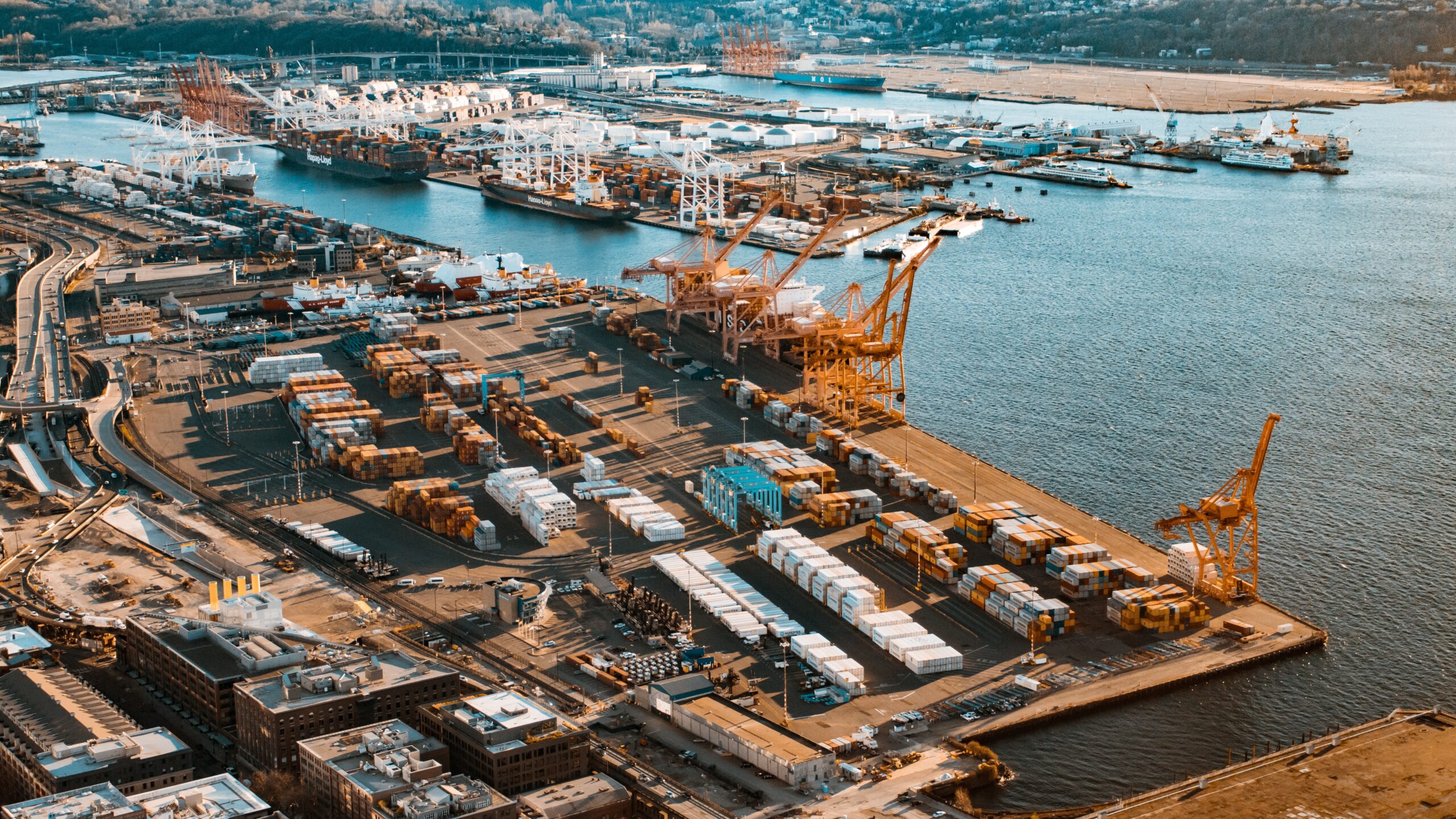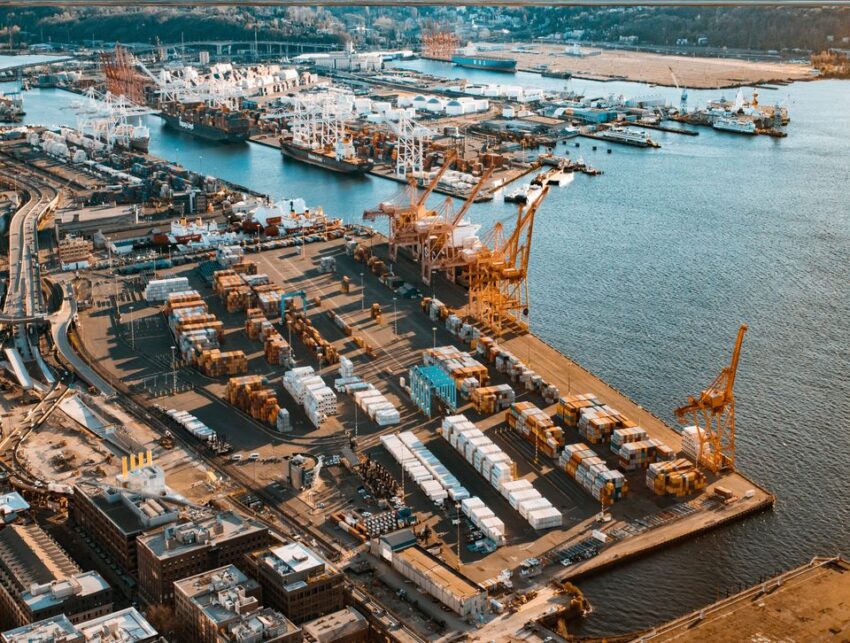China – one of the world’s most important shipping and industrial country, has come up as a major economic power with substantial control over international trade. Following several decades of economic development, China has established its position as one of the pioneers of the global container shipping sector. Furthermore, the country also has a very strong shipbuilding sector that has recently overtaken South Korea- formerly the world’s largest shipbuilding country. The Chinese government is presently investing in the enhancement of the international connectivity of the country with a special focus on the port infrastructure. This surely would give Beijing even greater control of the international maritime trade.

The top ten ports in China and how they influence the international container shipping sector
1. Port of Shanghai
This is the busiest international port in terms of cargo tonnage which covers an area of over 3,619 square Km and is located at the mouth of the Yangtze River. This port which was originally established between the 5th and 7th century AD has consistently been on the list of top 10 international ports overtaking the Port of Singapore in 2010. Additionally, this deep sea and riverine port is also one of the four largest international port megacities. Managed exclusively by Shanghai International Port Authority Company, it consists of three main container terminals with over 13 Km quay length. Shanghai Port has received the prestigious accolade of ‘Best Connected Port’ from UNCTAD.
2. Port of Ningbo- Zhoushan
The Port of Ningbo-Zhoushan is one of the most important ports in the country playing a lead role in the global container shipping sector. The Port of Ningbo also holds the record of becoming the first port to handle 1 billion tonnes of cargo throughput in one year. Located in China’s Zhejiang province, this port also offers intermodal rail services to remote areas of the country. Presently, its sea-rail transport network offers train services to 36 cities in China and even to countries in central and northern Asia and eastern Europe. Its location at the crossroad of the China Belt and Road Initiative is yet another factor that makes it one of the busiest ports in the country.
3. Port of Shenzhen
Located in the Pearl River area the Port of Shenzhen is the second-busiest port in China and the third busiest port in the world. It has been serving more than 50 shipping lines and around 10,000 container ships per year. Its sister port is the Port of Santa Cruz de Tenerife in Spain. The Shenzhen Port is also home to two of the largest terminal operators in China- Yantian International Container Terminals and China Merchant Ports.
A conglomeration of many minor ports, the Port of Shenzhen is one of the most evolving ports in China. It is separated into several zones that process various kinds of shipments. The port comes with more than 250 Km of coastline. Moreover, it is a part of the Hong Kong-Shenzhen Western Corridor that also serves to move freight via roadways.
4. Port of Guangzhou
The Guangzhou Port in South China lies on the Pearl River close to Macau and Hong Kong. This port is widely considered one of the most important ports in the Pearl Delta area. As the largest port in Southern China, it is well connected with over 300 international ports across 80 countries. Moreover, the Guangzhou Port is also a part of a well-knit road-rail and waterway network connecting it with the hinterlands of China.
With over 4,500 berths and 2,400 anchorage points, this port is well-equipped with customs checkpoints, huge storage areas, bonded warehouses, and logistics centres. This port mostly serves the transportation needs of commodities like grains, industrial items, fertilizers, minerals, automobile parts, steel ore etc.
5. Port of Qingdao
The Qingdao Port lying on the Yellow Sea is one of the most important ports in East China and the eighth largest port in the world. This international port is mainly used to ship freight to countries like Russia, the USA, South Korea, and Japan. It is well connected with 450 ports across 130 countries. Additionally, this port is also a famous international transshipment hub and reefer specialty port.
The Qingdao Port also comes with a large terminal used for handling iron ore and is in the process of becoming the largest iron-ore handling terminal in the globe. The 4 zones of Qingdao Port serve as autonomous ports. These four zones are- Dagang and Qianwan port area, Guangdong port area, and Dongjiakou port area. The Dagang and Qianwan port area are mainly used for handling containers while the Guangdong and Dongjiakou port areas are used for handling oil tankers and iron ore respectively.
6. Port of Hong Kong
This deep-sea port that lies on the South China Sea used to hold the first position in the top international ports list for many years. The Hong Kong Port is known for its low turnaround times with an average of just 10 hours for container ships. Moreover, the deep water allows this port to harbour ships of all types and sizes. The Hong Kong Port is home to around 800 ships from several governmental departs. It is also known for its mid-stream operations where ships don’t need to dock at the port during peak season or during bad weather.
7. Tianjin Port
The Tianjin Port is the most important port in Northern China. This riverine and deep-sea port is located along the Haihe River close to the Bohai Bay. Covering an area of 120 square km, this port comes with more than 200 berths that can accommodate container ships of all sizes. It is also the fourth largest international port in terms of cargo tonnage. The port is divided into nine zones, with the most important ones being Beijing, Dongjiang, and Nanjiang. The Tianjin Port is connected to more than 600 ports across 180 countries. This port is also one of the largest port megacities in the globe.
8. Port of Dalian
The Port of Dalian in North China which forms a maritime connection to the Pacific coastline lies on the Yellow Sea and the Bohai Sea. The second largest transshipment hub of China, it is connected by 300 ports from 160 countries. The Dalian Port’s infrastructure includes a rail network, over 300,000 square metres of warehouses, 1.8 million square metre of stacking yards and over 1000 units of equipment for loading and unloading. Although not one of the biggest ports in China, it still has an important role to play in the international container shipping sector.
9. Port of Xiamen
The Port of Xiamen is a deep-sea port that ranks among the top 20 international ports. Managed by the Xiamen Port Authority, the Port of Xiamen is the largest port in South-East China. It operates across twelve zones and comes with 74 berths with an average freight handling tonnage of 10,000. Every month more than 500 ships from over 50 countries call this port.
10. Port of Yingkou
The Port of Yingkou is mainly used for moving mass-produced goods, grains, machine parts, electronic items, and containerized cargo. The main import items that come to this port are steel, cars, grain, and coal. More recently, Russia has signed an MoU with the Port of Yingkou to jointly develop an international logistics terminal in Russia.


